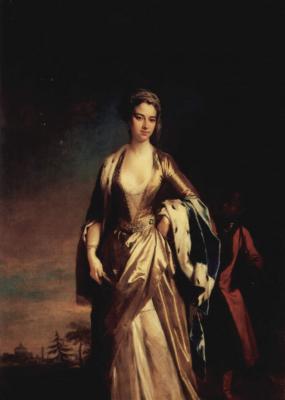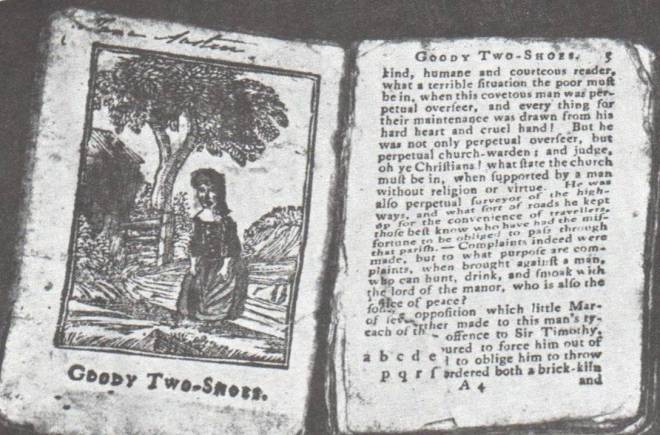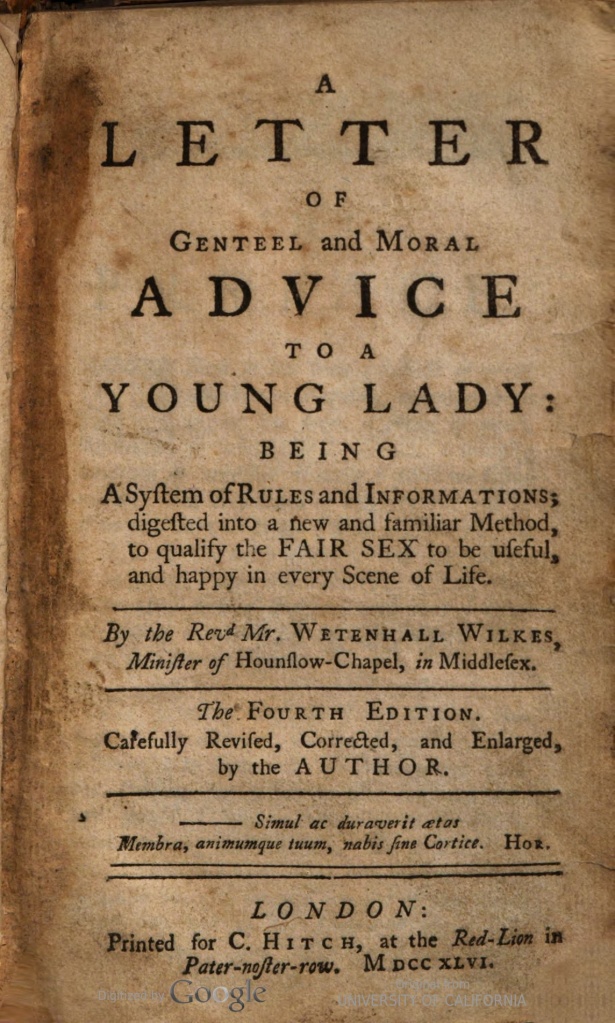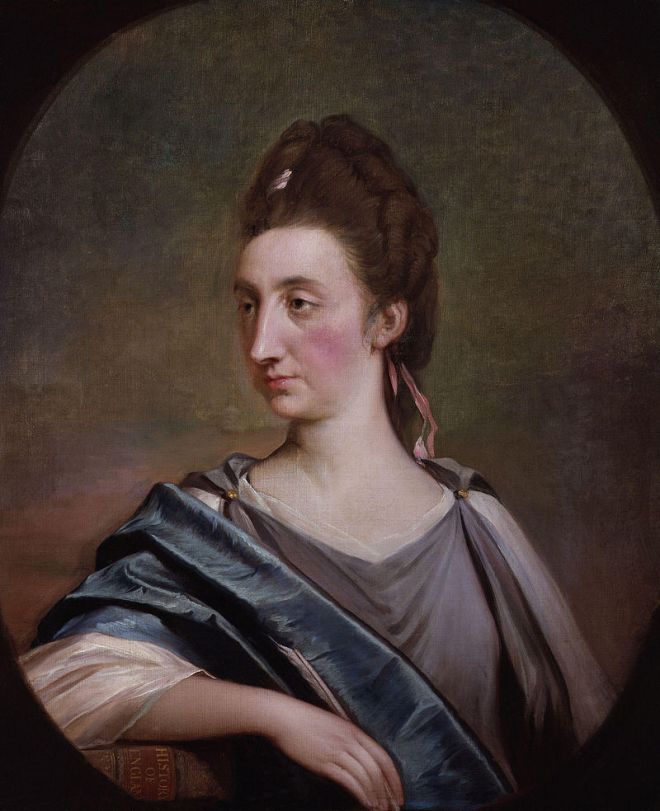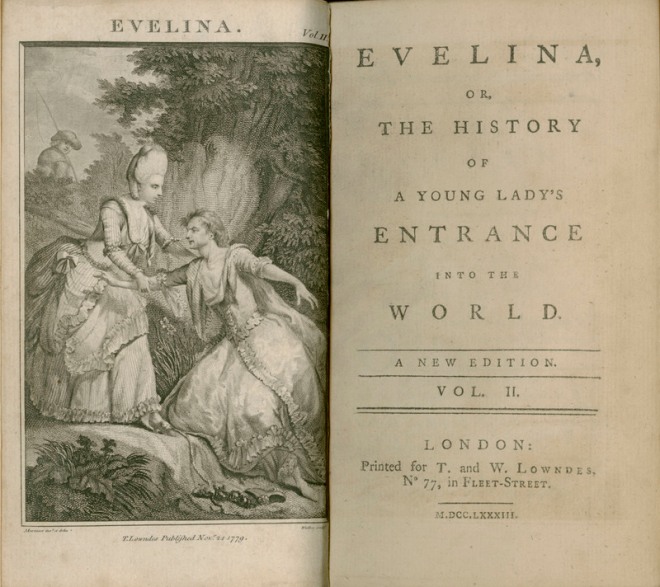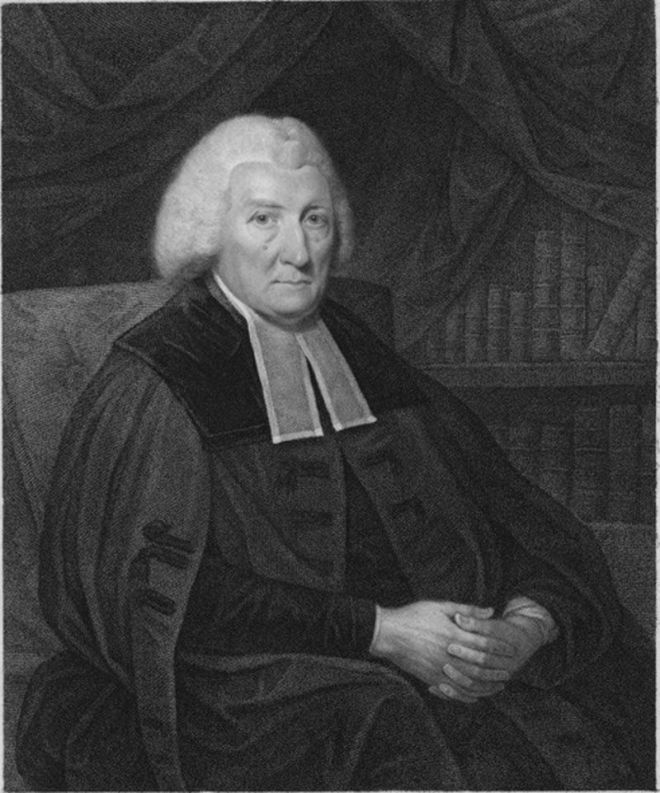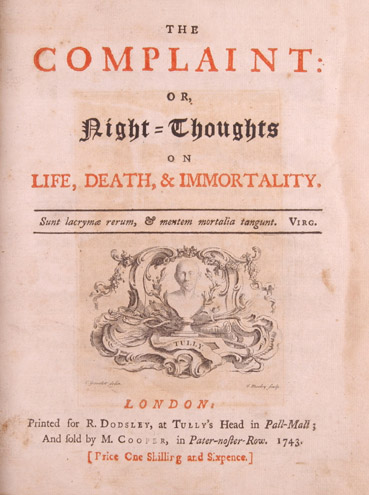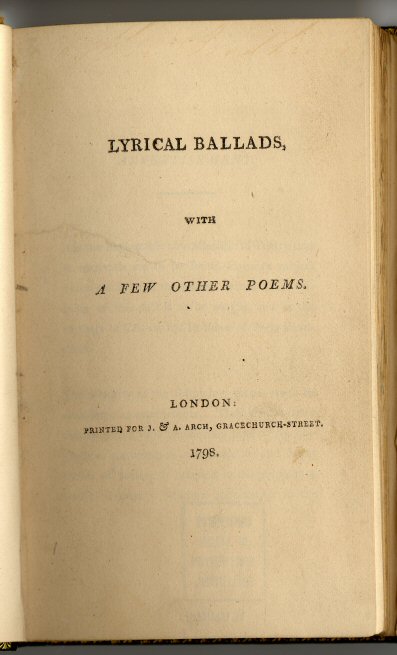Literature
‘Orlando’ ~ Free Access for the Month of March!
Orlando: Women’s Writing in the British Isles from the Beginnings to the Present, is on free access for March at http://orlando.cambridge.org, offering 9 million words comprising 1,413 author profiles, plus generous contextual and bibliographic material, all encoded with semantic and interpretative, searchable tags. Watch for an update during the month, adding new content and features to last year’s new interface.
When asked to log in, use:
email: OrlandoOpen@ualberta.ca
password: free-Orlando
***************
One of the many women writers to research!:
Lady Mary Wortley Montagu (1689-1762):
https://orlando.cambridge.org/profiles/montma
c2024 JaneAustenInVermont
From the Archives: “Jane Austen’s ‘own darling Child'”
From the Archives ~ Jane Austen’s Very Own Scrooge!
I pull this Christmas Eve message from the archives,
first posted on December 24, 2010
Wishing you all a very Merry Christmas and Festive Holidays!!
***************
It is a rare date that Austen mentions in her works, but one of them is today, December 24: Christmas Eve, “(for it was a very great event that Mr. Woodhouse should dine out, on the 24th of December)” [Emma Vol. I, Ch. xiii]
While we usually associate Mr. Woodhouse with often curmudgeonly weather-obsessed behavior, here he is most eager to get all wrapped up and head over to Randalls:
Mr. Woodhouse had so completely made up his mind to the visit, that in spite of the increasing coldness, he seemed to have no idea of shrinking from it, and set forward at last most punctually with his eldest daughter in his own carriage, with less apparent consciousness of the weather than either of the others; too full of the wonder of his own going, and the pleasure it was to afford at Randalls to see that it was cold, and too well wrapt up to feel it. [E, Vol. I, Ch. xiii]
So it is not dear fussy Mr. Woodhouse who is Scrooge this Christmas Eve, but Austen is adept at creating one, and long before Dickens ever did:
‘A man,” said he, ‘must have a very good opinion of himself when he asks people to leave their own fireside, and encounter such a day as this, for the sake of coming to see him. He must think himself a most agreeable fellow; I could not do such a thing. It is the greatest absurdity — Actually snowing at this moment! The folly of not allowing people to be comfortable at home, and the folly of people’s not staying comfortably at home when they can! If we were obliged to go out such an evening as this, by any call of duty or business, what a hardship we should deem it; — and here are we, probably with rather thinner clothing than usual, setting forward voluntarily, without excuse, in defiance of the voice of nature, which tells man, in every thing given to his view or his feelings, to stay at home himself, and keep all under shelter that he can; — here are we setting forward to spend five dull hours in another man’s house, with nothing to say or to hear that was not said and heard yesterday, and may not be said and heard again to-morrow. Going in dismal weather, to return probably in worse; — four horses and four servants taken out for nothing but to convey five idle, shivering creatures into colder rooms and worse company than they might have had at home.” [E, Vol. I, Ch. xiii]
Well, “Bah! Humbug!” to you too, John Knightley! – he is our Scrooge this Christmas Eve [indeed, I believe that Isabella has married her father!] and his ill humor continues throughout the evening – ending of course with his gloomy and overblown report of the worsening weather that sets off three full pages of discussion on the risks of setting out, on the possibility of being snowed-in, on the cold, on the danger to the horses and the servants – “‘What is to be done, my dear Emma? – what is to be done?’ was Mr. Woodhouse’s first exclamation…” and it all is finally “settled in a few brief sentences” by Mr. Knightley and Emma, certainly foreshadowing their success as a companionable couple.
And this leads to one of Austen’s most comic scenes – the proposal of Mr. Elton, Emma trapped in the carriage alone with him believing that “he had been drinking too much of Mr. Weston’s good wine, and felt sure that he would want to be talking nonsense…” – which of course he does…
Wishing you all a very Merry Christmas, with much snow on the ground (but not enough to trouble your carriage), some song and wine (but not enough to induce unwanted and overbearing offers of love and marriage), and the pleasure of good company (with hopefully no Scrooge-like visitors to whom you must either “comply” or be “quarrelsome” or like Emma, have your “heroism reach only to silence.” )
P.S. – And tonight pull your Emma off the shelf and read through these chapters in volume I [ch, 13-15] for a good chuckle! – this of course before your annual reading of A Christmas Carol.
___________________
Illustrations:
1. Emma’s Christmas Day Paper Doll at Fancy Ephemera.com
2. Dinner at Randalls at Chrismologist.blogspot.com
3. ‘Christmas Weather’ at Harlequin Historical Authors
4. Vintage postcard in my collection
5. A Christmas Carol cover: PenguinRandomHouse.com
c2022 Jane Austen in Vermont
From the Archives ~ Jane Austen’s Very Own Scrooge!
 I pull this Christmas Eve message from the archives,
I pull this Christmas Eve message from the archives,
first posted on December 24, 2010
Wishing you all a very Merry Christmas and Festive Holidays!!
***************
It is a rare date that Austen mentions in her works, but one of them is today, December 24: Christmas Eve, “(for it was a very great event that Mr. Woodhouse should dine out, on the 24th of December)” [Emma Vol. I, Ch. xiii]
While we usually associate Mr. Woodhouse with often curmudgeonly weather-obsessed behavior, here he is most eager to get all wrapped up and head over to Randalls:
Mr. Woodhouse had so completely made up his mind to the visit, that in spite of the increasing coldness, he seemed to have no idea of shrinking from it, and set forward at last most punctually with his eldest daughter in his own carriage, with less apparent consciousness of the weather than either of the others; too full of the wonder of his own going, and the pleasure it was to afford at Randalls to see that it was cold, and too well wrapt up to feel it. [E, Vol. I, Ch. xiii]
So it is not dear fussy Mr. Woodhouse who is Scrooge this Christmas Eve, but Austen is adept at creating one, and long before Dickens ever did:
‘A man,” said he, ‘must have a very good opinion of himself when he asks people to leave their own fireside, and encounter such a day as this, for the sake of coming to see him. He must think himself a most agreeable fellow; I could not do such a thing. It is the greatest absurdity — Actually snowing at this moment! The folly of not allowing people to be comfortable at home, and the folly of people’s not staying comfortably at home when they can! If we were obliged to go out such an evening as this, by any call of duty or business, what a hardship we should deem it; — and here are we, probably with rather thinner clothing than usual, setting forward voluntarily, without excuse, in defiance of the voice of nature, which tells man, in every thing given to his view or his feelings, to stay at home himself, and keep all under shelter that he can; — here are we setting forward to spend five dull hours in another man’s house, with nothing to say or to hear that was not said and heard yesterday, and may not be said and heard again to-morrow. Going in dismal weather, to return probably in worse; — four horses and four servants taken out for nothing but to convey five idle, shivering creatures into colder rooms and worse company than they might have had at home.” [E, Vol. I, Ch. xiii]
Well, “Bah! Humbug!” to you too, John Knightley! – he is our Scrooge this Christmas Eve [indeed, I believe that Isabella has married her father!] and his ill humor continues throughout the evening – ending of course with his gloomy and overblown report of the worsening weather that sets off three full pages of discussion on the risks of setting out, on the possibility of being snowed-in, on the cold, on the danger to the horses and the servants – “‘What is to be done, my dear Emma? – what is to be done?’ was Mr. Woodhouse’s first exclamation…” and it all is finally “settled in a few brief sentences” by Mr. Knightley and Emma, certainly foreshadowing their success as a companionable couple.
And this leads to one of Austen’s most comic scenes – the proposal of Mr. Elton, Emma trapped in the carriage alone with him believing that “he had been drinking too much of Mr. Weston’s good wine, and felt sure that he would want to be talking nonsense…” – which of course he does…
Wishing you all a very Merry Christmas, with much snow on the ground (but not enough to trouble your carriage), some song and wine (but not enough to induce unwanted and overbearing offers of love and marriage), and the pleasure of good company (with hopefully no Scrooge-like visitors to whom you must either “comply” or be “quarrelsome” or like Emma, have your “heroism reach only to silence.” )
P.S. – And tonight pull your Emma off the shelf and read through these chapters in volume I [ch, 13-15] for a good chuckle! – this of course before your annual reading of A Christmas Carol.
___________________
Illustrations:
1. Emma’s Christmas Day Paper Doll at Fancy Ephemera.com
2. Dinner at Randalls at Chrismologist.blogspot.com
3. ‘Christmas Weather’ at Harlequin Historical Authors
4. Vintage postcard in my collection
c2021 Jane Austen in Vermont
Collecting Jane Austen: Book Collecting 101
Gentle Readers: In an effort to offer weekly posts on collecting Jane Austen, I shall start with the basics of book collecting – this a general summary of things to consider with a few examples specific to Jane Austen and Pride and Prejudice in particular. This will be followed by weekly posts on randomly chosen books in the various categories I list here that I think are essential to a Jane Austen collection.
Let’s start in the pages of Pride and Prejudice in the library at Netherfield where we find Elizabeth, Miss Bingley, Mr. Bingley, and Mr. Darcy:
[Elizabeth] walked towards a table where a few books were lying. He [Bingley] immediately offered to fetch her others; all that his library afforded.
“And I wish my collection were larger for your benefit and my own credit; but I am an idle fellow, and though I have not many, I have more than I ever look into.”
Elizabeth assured him that she could suit herself perfectly with those in the room.
“I am astonished,” said Miss Bingley, “that my father should have left so small a collection of books. What a delightful library you have at Pemberley, Mr. Darcy!”
“It ought to be good,” he replied; “it has been the work of many generations.”
“And then you have added so much to it yourself, you are always buying books.” [my emphasis]
“I cannot comprehend the neglect of a family library in such days as these.”
Chatsworth Library [British Magazine]
And so, here we have the permission of Mr. Darcy himself to buy as many books as we would like!
II. The Collecting of Books:
Terry Belanger, a veteran book collector and rare book librarian once famously said “you are a collector if you have more than one copy of a single title” –
So, I ask you, how many of you have more than one copy of any of Jane Austen’s novels? And how many of you already realize that to collect all copies of books by and about Jane Austen is surely an impossible task? Even focusing on one title, say Pride and Prejudice, we would find it an impossible undertaking!
So where to start?
1. The first rule of book collecting is Collect what you Love – so I can assume that any of you reading this all love Jane Austen, and so that will be our focus… and not only the books but also the myriad objects and ephemera. You can collect anything – my son collects Sneakers, only Nike Jordans, which leads to books about sneakers, etc…!
An amusing tale about collecting one title: In a used bookshop in England a few years ago I hit the mother-load of A Child’s Garden of Verses – a title I collect –
I brought five different editions to the register, manned by a young man obviously neither the owner nor all that well-versed in the vagaries of collecting – he hesitated for a moment, looked thoughtful, and finally blurted out “Do you know that all these books are the same?” [epilogue: I bought them all…]
2. Try to find the 1st edition (and by “first edition” I mean “first printing”), and how do we do that?
1st edition Pride and Prejudice [National Library of Scotland]
For most of us, Jane Austen first editions are beyond our pocketbooks – but you will need to know the basics of book collecting to understand why some books are harder to find, and why, when you find them, they can often be expensive.
It is here you will need to decide if you want the first edition in pristine condition or if you only need a reading copy, or not even a first edition at all – this is a question to ask at every purchase.
The most difficult aspect of book collecting is how to identify a first edition – every publisher did it differently and often changed their indicators over time. There are many guides to help with this.
This Pocket Guide to the Identification of First Editions by Bill McBride is the best starting point for a general understanding of the practices of various publishers. You can also find this information online at Quill & Brush Books: https://www.qbbooks.com/first_ed_pub.php
Then you will need more specific detail on the author/subject you are collecting, and thankfully for us Jane Austen enthusiasts, David Gilson, and Keynes and Chapman before him, have largely done this work for us…
The David Gilson A Bibliography of Jane Austen will be your Bible to collecting Austen, a must-have book – I have already posted about this here: https://janeausteninvermont.blog/2021/02/26/collecting-jane-austen-gilsons-bibliography/
3. The Anatomy of a Book:
If you want to understand book terminology, you must have John Carter’s ABC for Book Collectors – the 8th edition by John Carter and Nicolas Barker. Oak Knoll Press / British Library, 2004.
It is now available online at ILAB: https://ilab.org/sites/default/files/2018-01/ABC-BOOK-FOR-COLLECTORS_0.PDF
Another easily accessible glossary is on Abebooks: https://www.abebooks.com/books/rarebooks/collecting-guide/understanding-rare-books/glossary.shtml
Most commonly used terms:
- 1st edition
- Issue
- Points
- Boards
- Spine head, spine tail
- Backstrip
- Text block
- Hinge
- Joint
- Endpapers
- Half-title page
- Title page
- Copyright page
- Frontispiece
- Publisher’s cloth
- Catchword: “heard” at the bottom of the page is the catchword = the first word on the next page
-Vignette
-Foxing:
Example of foxing: Dent 1908 reprint, illus. HM Brock
- Leather bindings: ¼, ¾, etc…
- Size terms: folio, quarto (4to), octavo (8vo), duodecimo (12mo), 16mo, etc
https://www.abebooks.com/books/rarebooks/collecting-guide/understanding-rare-books/guide-book-formats.shtml
4. Determining value: supply and demand – Desirability+Scarcity=Value
- Is the book still in print?
- How many copies were printed?
- Is this the author’s first book? – Sense and Sensibility is the most valuable
- How did the book first appear? – binding, dust jacket? [value greatly reduced if lacking jacket: 75% – fiction, 20% – non-fiction]. Eg. S&S first published in boards is more valuable than the finest leather binding
S&S 1st ed in boards and leather bound]: estimated value: $200,000 / $50,000.
- Illustrations present? are they all there?
- Condition, Condition, Condition! – most important factor! [see more below]
- Where do you find values? There are many guides to consult:
- Allen and Patricia Ahearn. Collected Books: A Guide to Identification and Values. 4th ed. (2011); see also their author guides – one on JA from 2007
- American Book Prices Current: auction sales, so actual value
- Bookseller catalogues: what titles are selling for
- Author and subject bibliographies
- Internet: bookselling sites: be wary – prices all over the place
5. CONDITION is the most important issue: prices will vary depending upon condition – even if you have the 1st edition – if it is in deplorable condition that will affect the value.
Booksellers grade a book’s condition using the terms below, from “As New” down to “Poor”: for instance VG [for the book ] / VG [for the jacket] – anything less than a VG is really not collectible:
VERY FINE/NEW [VF / NEW]: As new, unread.
FINE: Close to new, showing slight signs of age but without any defects.
VERY GOOD [VG]: A used book that shows some sign of wear but still has no defects.
GOOD [G]: A book that shows normal wear and aging, still complete and with no major defects.
FAIR: A worn and used copy, probably with cover tears and other defects.
POOR: a mess really, but might have some redeeming qualities
READING COPY: any book less than VG
*************
An interesting tale to demonstrate this: The rare bookseller Stuart Bennett [no relation to our esteemed Bennet family!] writes in his book Trade Bookbinding in the British Isles 1660-1800.
Alas! pre-Austen, but we find her in a NOTE: [an aside – always check indexes for Jane Austen – you will be pleasantly surprised to see how often she turns up and in the most amazing places!]
Bennett writes in a footnote on the issue of publishing in boards vs. the wealthy having their favorite books bound in leather:
What is certain is that wrappered and boarded popular literature was not part of the visual landscape of country house libraries. In my experience these books, when kept, found their way into cupboards underneath the display bookcases, or into passages or rooms used by servants. In my days at Christie’s I once spent hours in the pantry cupboards of a Scottish country house, searching through stacks of these wrappered and boarded books among which I found, virtually as new, Volume III of the first edition of Sense and Sensibility. When I found the other two volumes I remarked to the aristocratic owners that this was one of the most valuable books in the house, as exceptional survival in original condition, and doubtless so because one of their ancestors had bought Jane Austen’s first novel, read it, and hadn’t cared enough to send it to for rebinding, and never bought another. My ebullience was arrested by an icy stare from the Countess, who replied, “I am sure, Mr. Bennett, that our ancestors would never have felt that way about Jane Austen.” [3]
Stuart tells me: this S&S set the then-record auction price in 1977 or 1978 (he was the auctioneer!), and turned up about twenty or maybe 25 years later offered by a London bookseller for, as he recalls, $200,000. Then it disappeared again.
Question: Should you buy a less collectible book because you cannot afford the higher price? – do you just want a reading copy or need to fill a gap in your collection? – you can decide this on a case-by-case basis – what becomes available and when and how much you can spend…
6. Where to find Books:
“Beauty in Search of Knowledge” – Thomas Rowlandson
– Local bookstores: sadly less of them, but still the best resource of Jane Austen books – a bookseller who will know your likes, will buy with you in mind, someone to trust…
– Specific booksellers: those who specialize in Jane Austen and other women writers – shops, catalogues – you can find at book-fairs, being on their catalogue mailing list, and on the internet. For eg. Jane Austen Books https://www.janeaustenbooks.net/
– Auctions / auction catalogues
– The Internet: major used bookselling sites: you need to be an informed consumer!
- Abebooks [part of amazon, but separate]: www.abebooks.com
- Alibris: www.alibris.com
- Biblio: www.biblio.com
- ILAB: www.ilab.org/index.php
- Amazon: www.amazon.com
- Barnes & Noble: www.barnesandnoble.com/
- Ebay: www.ebay.com/chp/books
- Etsy: www.etsy.com/
- Book searching sites: [searches all used book databases]
- – viaLibri http://www.vialibri.net/index.php?pg=home
- – Bookfinder http://www.bookfinder.com/
- – AddALL: http://www.addall.com/
The Good, the Bad, and the Ugly of the Internet: I could write a very lengthy post just on this – so I will only emphasize the biggest positive – you have at your fingertips a Global marketplace – no longer dependent on a brick & mortar shop around the corner [sad as this is to me!]
Biggest negative: be in be-wary mode – who are you buying from? – how to decide which is the best copy with so many price and condition discrepancies? – my best advice? – choose a bookseller who knows what they are about: valid and complete descriptions and a price that seems reasonable in light of other copies on offer.
A word about EBAY: a Gigantic auction house always open! – an amazing resource but also the biggest potential for getting a bad deal – you need to be an informed consumer!
Best use of the internet: Want Lists – most book sites do this and auction houses offer “alerts” – you will be notified when an item becomes available…
7. Caring for your collection: lots of information here to consider…just not today.
II. What to Collect:

Now comes the hard part – with so much out there on Jane Austen, where do you even begin? The need to focus on one particular aspect [say just collecting copies of Pride and Prejudice], or by zeroing in on a certain illustrator you like [the Brock brothers], or only books with fine decorative bindings [so many] – this list covers the gamut of possibilities – you just need to choose what you are most interested in. You must however start with a core collection:
A. A Jane Austen Core Collection
1. The Works: the Oxford edition, ed. by Chapman (1923); the Cambridge edition, general editor Janet Todd, with each volume edited by a a different scholar; a set of reading copies of each novel – ones you can markup, underline, and make notes
2. The Letters – all editions [Brabourne, Chapman, Le Faye, Modert]
3. R. W. Chapman’s books on Jane Austen
4. Biography: the Memoir and everything since!
5. A Chronology of Jane Austen, Deirdre Le Faye (Cambridge, 2006)
6. The Bibliographies: Keynes, Chapman, Gilson, Barry Roth’s 3 volumes, and those continued annually in Persuasions; the Cambridge Bibliographies, etc…
7. Brian Southam. The Critical Heritage. Vol I. 1811-1870. Routledge, 1979; The Critical Heritage, Vol. II. 1870-1940. Routledge, 1987. – now available as digital reprints, 2009
8. Critical works: starting off point to further study – where to start?? The bibliographies; “Companions” – “Handbooks” – “Casebooks”
9. The World of Jane Austen: [endless material!]
- The Arts: Music, Art, Architecture; Interior Design and Decorative Arts; Landscape
- Georgian and Regency History: Political, Economic, Social, Religious
- Social life and customs: Etiquette; Gender / Class issues; Dancing; Costume and Fashion
- Domestic Arts: Cookery, Needlework, Women’s work, Family life, Home-life, Servants
- Medical History
- Military History: the Royal Navy, the Militia, The French Revolution, the American Revolution, Napoleonic Wars, War of 1812
- Geographical History and Maps
- Travel and Transportation: Carriages, Roads, Guidebooks, etc…
- Literary Theory, History of the Novel, Narrative Theory, Language
B. Collecting a specific Jane Austen novel: as an example Pride & Prejudice
- 1st editions
- American editions
- Specific Publishers: Bentley, Macmillan, Dent, Oxford, Folio Society, LLC, Penguin, etc.
- Translated editions
- Illustrators: also single illustrations
- Decorative bindings / cover art – to include paperbacks
- Critical editions: with scholarly editing and introductions
- Books where P&P shows up
- Association copies: e.g. Sarah Harriet Burney’s copy
- Books that influenced Austen: e.g. Frances Burney’s Cecilia
- Adaptations: Editions for young readers; Dramatizations; Films, Audiobooks
- Sequels! – endless potential!
- History / Social Life and Customs of the times, specific to P&P – fill your bookshelves!
- Ephemera and Physical Objects – P&P merchandise in popular culture, many to do with Colin Firth…(!)
*****************
Ok, now you know everything to know about Book Collecting – you can begin this lifelong fun-filled endeavor! Join me next week for the first of many [I hope] Jane Austen-related titles you must have on your shelves…all with Mr. Darcy’s approval. Any questions or suggestions, please comment.
©2021, Jane Austen in Vermont
From the Archives ~ Jane Austen’s Very Own Scrooge
 I pull this Christmas Eve post from the archives,
I pull this Christmas Eve post from the archives,
first posted on Dec 24, 2010
Wishing you all a very Merry Christmas and Festive Holidays!!
***************
It is a rare date that Austen mentions in her works, but one of them is today, December 24: Christmas Eve, “(for it was a very great event that Mr. Woodhouse should dine out, on the 24th of December)” [Emma Vol. I, Ch. xiii]
While we usually associate Mr. Woodhouse with often curmudgeonly weather-obsessed behavior, here he is most eager to get all wrapped up and head over to Randalls:
Mr. Woodhouse had so completely made up his mind to the visit, that in spite of the increasing coldness, he seemed to have no idea of shrinking from it, and set forward at last most punctually with his eldest daughter in his own carriage, with less apparent consciousness of the weather than either of the others; too full of the wonder of his own going, and the pleasure it was to afford at Randalls to see that it was cold, and too well wrapt up to feel it. [E, Vol. I, Ch. xiii]
So it is not dear fussy Mr. Woodhouse who is Scrooge this Christmas Eve, but Austen is adept at creating one, and long before Dickens ever did:
‘A man,” said he, ‘must have a very good opinion of himself when he asks people to leave their own fireside, and encounter such a day as this, for the sake of coming to see him. He must think himself a most agreeable fellow; I could not do such a thing. It is the greatest absurdity — Actually snowing at this moment! The folly of not allowing people to be comfortable at home, and the folly of people’s not staying comfortably at home when they can! If we were obliged to go out such an evening as this, by any call of duty or business, what a hardship we should deem it; — and here are we, probably with rather thinner clothing than usual, setting forward voluntarily, without excuse, in defiance of the voice of nature, which tells man, in every thing given to his view or his feelings, to stay at home himself, and keep all under shelter that he can; — here are we setting forward to spend five dull hours in another man’s house, with nothing to say or to hear that was not said and heard yesterday, and may not be said and heard again to-morrow. Going in dismal weather, to return probably in worse; — four horses and four servants taken out for nothing but to convey five idle, shivering creatures into colder rooms and worse company than they might have had at home.” [E, Vol. I, Ch. xiii]
Well, “Bah! Humbug!” to you too, John Knightley! – he is our Scrooge this Christmas Eve [indeed, I believe that Isabella has married her father!] and his ill humor continues throughout the evening – ending of course with his gloomy and overblown report of the worsening weather that sets off three full pages of discussion on the risks of setting out, on the possibility of being snowed-in, on the cold, on the danger to the horses and the servants – “‘What is to be done, my dear Emma? – what is to be done?’ was Mr. Woodhouse’s first exclamation…” and it all is finally “settled in a few brief sentences” by Mr. Knightley and Emma, certainly foreshadowing their success as a companionable couple.
And this leads to one of Austen’s most comic scenes – the proposal of Mr. Elton, Emma trapped in the carriage alone with him believing that “he had been drinking too much of Mr. Weston’s good wine, and felt sure that he would want to be talking nonsense…” – which of course he does…
Wishing you all a very Merry Christmas, with much snow on the ground (but not enough to trouble your carriage), some song and wine (but not enough to induce unwanted and overbearing offers of love and marriage), and the pleasure of good company (with hopefully no Scrooge-like visitors to whom you must either “comply” or be “quarrelsome” or like Emma, have your “heroism reach only to silence.” )
P.S. – And tonight pull your Emma off the shelf and read through these chapters in volume I [ch, 13-15] for a good chuckle! – this of course before your annual reading of A Christmas Carol.
___________________
Illustrations:
1. Emma’s Christmas Day Paper Doll at Fancy Ephemera.com
2. Dinner at Randalls at Chrismologist.blogspot.com
3. ‘Christmas Weather’ at Harlequin Historical Authors
4. Vintage postcard in my collection
c2020 Jane Austen in Vermont
Mary Bennet’s Reading in “The Other Bennet Sister” by Janice Hadlow
 In Janice Hadlow’s The Other Bennet Sister, a brilliant effort to give the neglected-by-everyone Mary Bennet a life of her own, Mary’s reading is one of the most important aspects of the book – we see her at first believing, because she knows she is different than her other four far prettier and more appealing sisters, that her prospects for the expected life of a well-married woman are very limited, and that she must learn to squash her passions and live a rational life. She also mistakenly thinks that by becoming a reader of philosophical, religious, and conduct texts that she will finally gain approval and maybe even love from her distant, book-obsessed father.
In Janice Hadlow’s The Other Bennet Sister, a brilliant effort to give the neglected-by-everyone Mary Bennet a life of her own, Mary’s reading is one of the most important aspects of the book – we see her at first believing, because she knows she is different than her other four far prettier and more appealing sisters, that her prospects for the expected life of a well-married woman are very limited, and that she must learn to squash her passions and live a rational life. She also mistakenly thinks that by becoming a reader of philosophical, religious, and conduct texts that she will finally gain approval and maybe even love from her distant, book-obsessed father.
So Mary embarks on a course of serious rational study – and one of the most insightful things in the book is that she learns, after much pain, that this is no way to lead a life, to find happiness, to find herself. She rejects the novels like the ones Mrs. Bennet finds at the local circulating library as being frivolous, largely because James Fordyce tells her so…
So, I have made a list of all the titles that Hadlow has Mary reading or referring to – all real books of the time, and many mentioned and known by Jane Austen. Hadlow is very specific in what books she puts in Mary’s hands! And shows her own knowledge of the reading and the reading practices of Austen’s time. [If anyone detects anything missing from this list, please let me know…]
I am giving the original dates of publication of each title; most all the titles in one edition or another are available on Google Books, HathiTrust, Internet Archive, or the like – I provide a few of those links, if you are so inclined to become such a rational reader as Mary….
***************
Anonymous. The History of Little Goody Two Shoes (show JA’s copy). London: John Newbury, 1765. Attributed to various authors, including Oliver Goldsmith. We know that Jane Austen has her own copy of this book, here with her name on it as solid proof.
Mrs. [Sarah] Trimmer. The Story of the Robins. Originally published in 1786 as Fabulous Histories, and the title Trimmer always used. You can read the whole book here: https://en.wikisource.org/wiki/The_Story_of_the_Robins
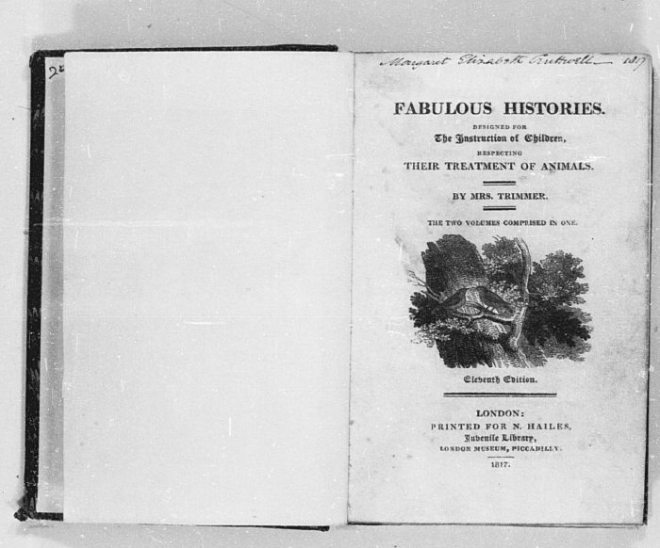
image: HockliffeProject: http://hockliffe.dmu.ac.uk/items/0241pages.html?page=001
Rev. Wetenhall Wilkes. A Letter of Genteel and Moral Advice to a Young Lady: Being a System of Rules and Informations: Digested Into a New and Familiar Method, to Qualify the Fair Sex to be Useful, and Happy in Every Scene of Life. London, 1746. Another conduct book.
Full text here: https://catalog.hathitrust.org/Record/012393127
***********
Catharine Macaulay. The History of England. 8 vols. London, 1763-83. A political history of the seventeenth century, covering the years 1603-1689. This was very popular and is in no way related to the later History published by Thomas Babington Macaulay. You can read more about this influential female historian in this essay by Devoney Looser: Catharine Macaulay: The ‘Female Historian’ in Context
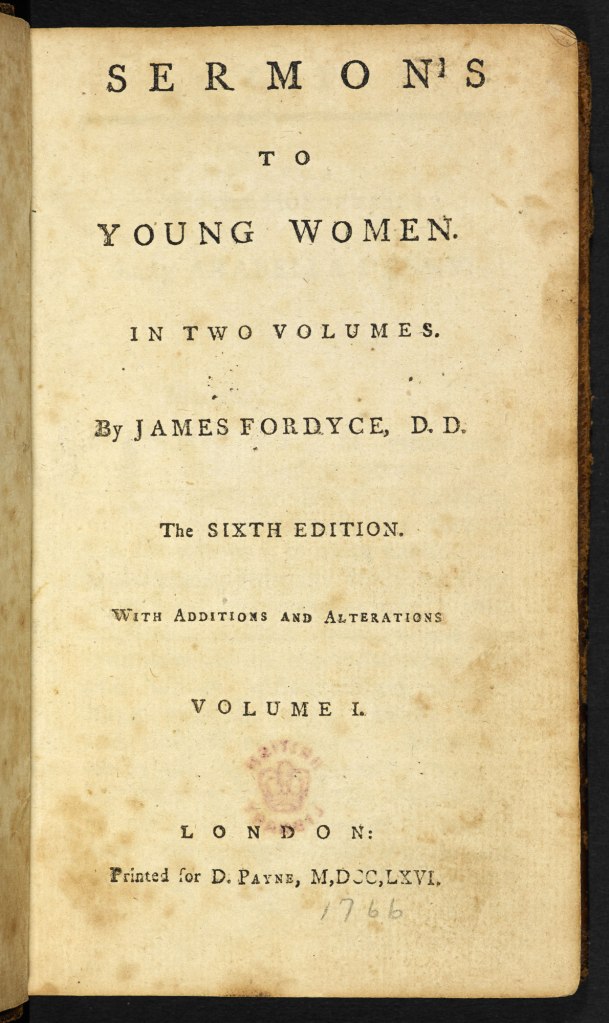
image: British Library https://www.bl.uk/collection-items/sermons-to-young-women
Rev. James Fordyce. Sermons to Young Women. London, 1766. A conduct manual.
In Pride and Prejudice, Mr. Collins chooses to read Fordyce’s Sermons to Young Women aloud to the Bennet sisters, Lydia especially unimpressed: “Lydia gaped as he opened the volume, and before he had, with very monotonous solemnity, read three pages, she interrupted him …’.
You can find it on google in later editions, but here is an abstract for 2 of the sermons to give you an idea.
And here an essay on Fordyce and P&P by Susan Allen Ford, who also wrote the introduction for the Chawton House Press edition of the Sermons (2012) : http://www.jasna.org/persuasions/on-line/vol34no1/ford.html
*************
Frances Burney. Evelina, or the History of a Young Lady’s Entrance into the World. London, 1778. Hadlow gives Evelina a good hearing – in the discussion in Mr. Bennet’s library with Elizabeth and Mary. Elizabeth directly quotes Austen’s own words in defense of the novel that are found in Northanger Abbey. [Evelina, and Mary’s difficulty in coming to terms with such a frivolous story, is mentioned more than once].
***********
Other Novels mentioned are:
– Samuel Richardson. The History of Sir Charles Grandison. London, 1753. 7 vols. Reported to be Austen’s favorite book, all seven volumes!
– Henry Fielding. The History of Tom Jones, a Foundling. 4 vols. London, 1749. Supposedly the reason Richardson wrote his Grandison. [Mentioned more than once] – I think we should read this book next for our JABC!
– Laurence Sterne. The Life and Opinions of Tristram Shandy, Gentleman. 9 vols. London, 1759-1767.
***************
Hugh Blair. Sermons. Vol. 1 of 5 published in 1777.
You can view it full-text at HathiTrust.
Mary Crawford refers to Blair in Mansfield Park:
“You assign greater consequence to the clergyman than one has been used to hear given, or than I can quite comprehend. One does not see much of this influence and importance in society, and how can it be acquired where they are so seldom seen themselves? How can two sermons a week, even supposing them worth hearing, supposing the preacher to have the sense to prefer Blair’s to his own, do all that you speak of? govern the conduct and fashion the manners of a large congregation for the rest of the week? One scarcely sees a clergyman out of his pulpit.”
***************
William Paley. A View of the Evidences of Christianity. London, 1794.
Aristotle. The Ethics of Aristotle. [no way to know the exact edition that Mr. Collins gives to Mary – it’s been around for a long time!]
Mentions: all Enlightenment thinkers and heavy reading for Mary!
– John Locke
– William Paley (again)
– Jean-Jacques Rousseau
– David Hume
A Dictionary of the Greek Language – Mr. Collins gives a copy to Mary.
*************
Edward Young. The Complaint: or, Night-Thoughts on Life, Death, and Immortality. [Known as Night-Thoughts]. London, 1742-45. [No wonder Mr. Hayward suggested a lighter type of poetry!]
You can read the whole of it here, if you are up to it…: https://www.eighteenthcenturypoetry.org/authors/pers00267.shtml
**************
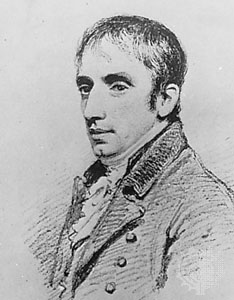
William Wordsworth, portrait by Henry Edridge, 1804; in Dove Cottage, Grasmere, England. Britannica.com
William Wordsworth. Lyrical Ballads. London, 1798. Full title: Lyrical Ballads, with a Few Other Poems is a collection of poems by William Wordsworth and Samuel Taylor Coleridge [Mr. Hayward does not mention Coleridge at all!], first published in 1798 and considered to have marked the beginning of the English Romantic movement in literature. Most of the poems in the 1798 edition were written by Wordsworth; Coleridge has only four poems included, one being his most famous work, The Rime of the Ancient Mariner.
Here is a link to the full-text of “Tintern Abbey” that so moved Mary: https://www.poetryfoundation.org/poems/45527/lines-composed-a-few-miles-above-tintern-abbey-on-revisiting-the-banks-of-the-wye-during-a-tour-july-13-1798
*********************
William Godwin. Enquiry Concerning Political Justice and its Influence on Morals and Happiness. London, 1793. [Godwin, it is worth noting, married Mary Wollstonecraft and was the father of Mary Godwin Shelley]. Outlines Godwin’s radical political philosophy.
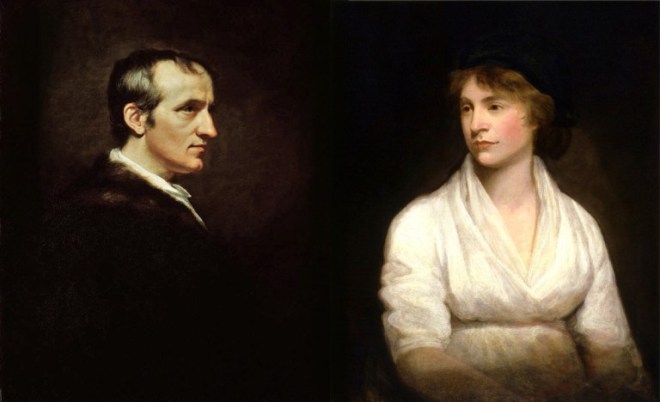
William Godwin (portrait by James Northcote) and Mary Wollstonecraft (portrait by John Opie) – from BrainPickings.org
************
Machiavelli – is referred to by Mary, so assume she is familiar with his The Prince (1513).
****************

Image: Guide to the Lakes. ‘View on Winandermere’ [now called Windermere], by Joseph Wilkerson. Romantic Circles
******************
John Milton. Paradise Lost. A mention by Mr. Ryder who is defeated by its length, so we know Mary was familiar with it.
***********
The Edinburgh Review / The Quarterly Review – brought to Mary by Mr. Ryder, and for which Mr. Hayward perhaps wrote his reviews. The Edinburgh Review (1802-1929); Quarterly Review (1809-1967, and published by Jane Austen’s publisher John Murray) – both were very popular and influential publications of their time…
*********************
The Other Bennet Sister is an enjoyable read – it is delightful to see Mary Bennet come into her own, that despite what she viewed as an unhappy childhood, she finds her way through a good number of books in a quest to live a rational, passionless existence. And that the development of some well-deserved self-esteem with the help of various friends and family, might actually lead her to a worthy equal partner in life, just maybe not with Mrs. Bennet’s required £10,000 !
- Here is an excellent review of the book at The Christian Science Monitor: https://www.csmonitor.com/Books/Book-Reviews/2020/0408/The-Other-Bennet-Sister-focuses-attention-on-bookish-Mary
- And an interview with the author at NPR: https://www.npr.org/2020/04/09/830069319/elizabeths-more-serious-sister-mary-takes-the-spotlight-in-the-other-bennet-sist
©2020 Jane Austen in Vermont
“The Lost Books of Jane Austen” ~ Interview with Author Janine Barchas
Enquiring Minds: I welcome today, Professor Janine Barchas, author of the recently published The Lost Books of Jane Austen, a work of mind-boggling scholarship, wherein “hardcore bibliography meets Antiques Roadshow!” And whether your tastes run to book history, the science of bibliography, literary history, or just a love of Jane Austen, you will be delighted with this addition to your Austen collection – an absolute must-have in my mind, to be shelved in a place of honor right alongside your copy of David Gilson. And don’t think it is some pedagogical tome – I laughed, I cried, I learned, I was wowed! – and I think you will be too.
Today, Janine is going to share with us what got her started on this incredible journey, some of her finds, and where it all goes from here.
Deb: First off, I must say that his book has been universally praised by Austen scholars and readers, book historians, and bibliographers! Did you have any idea the book would be so universally embraced?
JB: I dared not hope. Instead, I worried about whether crisscrossing the standard demarcations between audience groups (academics v. fans, readers v. collectors) might prove fatal. At the start, anonymous readers of the manuscript for Johns Hopkins University Press warned against the intellectual Schizophrenia of my approach (my phrasing). In view of their worry, much of the final book was rewritten and reframed so that essential bibliographical details would not detract from the larger human narrative—what my editor called “not getting lost in the weeds.” In other words, I had a lot of help and advice while shaping a book to appeal widely—and to different people for different reasons. Who would have thought that any press could produce such a handsome gift-worthy volume filled with headshots of tatty, cheap, and rejected books? From the start, there was something not entirely rational about expecting any audience for a book about unwanted books. I’m immensely gratified that so many people share my affection for these neglected reprints.
Deb: How did your education / scholarship lead you to working on Jane Austen – how, and when? In other words, when did your fascination with Austen begin?
JB: I came to Austen late and reluctantly. I was not introduced to her until college and graduate school, where I read her as a duty (as a stop along the history of the novel genre) rather than as a pleasure. I did not return to her novels in earnest until I was asked to teach a single-author course on Austen. At first, I tried to argue my way out of the task—after all, Samuel Richardson, who has no action figure, needed me more. Eventually, I gave in to the market demand on campus. Once I slowed down, reread all her books, and started teaching Austen, I had to bend at the knee along with all her other devotees.
 Deb: You have always had an interest in book history – tell us about your first book: Graphic Design, Print Culture, and the Eighteenth-Century Novel, published by Cambridge University Press in 2003.
Deb: You have always had an interest in book history – tell us about your first book: Graphic Design, Print Culture, and the Eighteenth-Century Novel, published by Cambridge University Press in 2003.
JB: All my projects seem to take a material turn. Graphic Design argued that it was silly for serious academics to study and write about eighteenth-century novels while staring at and quoting from modern paperbacks (e.g. the Penguin reprints used in college classrooms). I showed how these modern reprints had silently altered the text as well as the innovative typographical innovations for which the genre was termed “novel” in the first place (ie. layout, paratexts, illustrations, the advertising language of title pages, font choices). In Graphic Design I urged serious scholars to return to the original editions of eighteenth-century books when studying literary meaning. In Lost Books, I finally found a scholarly purpose for all those inauthentic reprintings that I dismissed as unauthoritative in that early project!
Deb: You go through 200 years of Austen’s publishing history in such an interesting order. When did it become apparent that these divisions were a way of approaching the Lost Books: Paperback Jane, Scholarly Jane, Virtuous Jane, Temperance Jane, Marketing with Jane, Armed Services Jane, Chick-lit Jane, etc…
JB: For years, I periodically rearranged the shelves of the cheap Austen reprints that I acquired, grouping books on the dining room table and elsewhere to see what patterns emerged—patterns of aesthetics, formats, prices, audiences, etc. I wanted to explore patterns that would allow me to go beyond the usual mere temporal lists of publications (“and then this edition, and then this one”). While the story of the “pinking” of Jane Austen during the 1950s and 60s showed itself fairly quickly, the most meaningful patterns were impossible to see until after I gained access to the books of other collectors whose plentiful shelves contained many more examples to sort (physically or mentally). All in all, it probably took nine years of looking before the one year of writing to feel that I had a book’s worth of findings to share.
Deb: The seven Vignettes you include in the book tell the stories of book owners of the many Austen novels you have found. These are enlightening, sometimes wrenching – but such a personal tribute to Austen’s many readers through the past 200 years. A name, a date, maybe an address would send you on a deep-dive adventure into census, birth, marriage and death records – thank goodness for the internet and ancestry.com, making such research even possible! What was your favorite connection that you found?
JB: Locating the backstories and former owners behind particular copies was indeed the most rewarding part of researching and writing this book. However, asking me to pick between these people and their books is like asking a mother which child is her “favorite.” As you say, some of the backstories proved tearjerkers while other copies offered up endearing or surprising anecdotes about the lives of real Austen readers. The vignette that makes me smile most broadly is probably the one about the young Harvard law student named Heman Burr who, on his very first trip to Paris in 1879, binge read all of Jane Austen’s novels.
Deb: What was the most elusive, that you just couldn’t let go? – and finally found something…
JB: Unlocking the ownership history of one cheap mid-nineteenth-century copy of Mansfield Park depended upon locating the official naval record of the officer whose name matched the ownership signature. Even after I found his record, I needed help from a colleague familiar with naval terminology and a knowledge of specific ships and battles to see that his navel career mapped neatly onto the Austen novel that he had so treasured.
Deb: And the one(s) where you hit a brick-wall and ended at a dead end?
JB: There were dozens and dozens of books whose ownership signatures I could not trace with certainty in the historical record – sometimes because the name was too common or the inscription lacked mention of a location to help triangulate it. The anonymity that an all-too-common name conveys has its own cosmic sadness. For a provenance researcher there is nothing more deflating than the proud ownership signature of a “Miss Smith.”
Deb: How many more stories do you have, not included in Lost Books, but possibly to be published elsewhere? Can we hope for a Vignettes sequel??
JB: There were handfuls of worthy backstories and many clusters of odd reprints that did not make it into the final book. While a sequel is not in the cards (sweet of you to ask!), I have published a few of those findings as separate essays for the Los Angeles Review of Books and also for Literary Hub.
Another such essay (about the ignored marginalia of those who disliked Austen) is scheduled to appear in the May/June issue of Jane Austen’s Regency World magazine.

‘Sense and Sensibility’ in the Marguerite Series from Miles & Miles (London), no date – Barchas collection (page 112)
Deb: Throughout this past decade of research, you located and purchased as many of these cheaply published works as possible; or you found collectors willing to share their shelves with you; or you found the odd one in a scholarly institution:
– What surprised you the most?
 JB: The sheer number of cheap reprints not listed in Jane Austen’s bibliographies. I had assumed that bibliographies were, barring oversight and human error, objective records of publications. I was taken aback by how subjective the discipline of bibliography is and how biased towards “important” highbrow editions.
JB: The sheer number of cheap reprints not listed in Jane Austen’s bibliographies. I had assumed that bibliographies were, barring oversight and human error, objective records of publications. I was taken aback by how subjective the discipline of bibliography is and how biased towards “important” highbrow editions.
Deb: Your most amazing discovery?
JB: A well-thumbed copy of Mansfield Park from the 1890s that served as an attendance prize in a temperance society for coal miners. Coal miners!
Deb: Most elusive find?
JB: A paperback copy of Elizabeth Bennet published in Philadelphia in 1845 and which originally sold for 25 cents.
**************
 Deb: What is now the most prized book in your collection, and why?
Deb: What is now the most prized book in your collection, and why?
JB: The cheap colorful copy of Northanger Abbey published by Blackie & Sons which was awarded as a school prize in Forfar Scotland in 1911 to one “Annie Munro.” During my research, I discovered that only six months later Annie tragically died from diphtheria, age 13, and that this volume could be the sole artifact she left behind. It was an honor to be able to tell Annie’s story in the book’s last vignette, and it remains an honor to safeguard her prized book.

Deb: Tell us about the cover, specially done for you – it is such a combination of the old, the new, the charming – just a perfect introduction to the feast that awaits the reader on the inside!
JB: The incredible artist who created the book sculpture for the cover is Mike Stilkey, who works with discarded library books and lives in Los Angeles. He is famous for his large wall-sized installations on which he paints unique figures and animals. In a fan letter, I told him about my own Lost Books project. He then created his “Jane Austen” sculpture from discarded books for possible use on the cover. Everyone at the press instantly loved it. I agree that Stilkey’s work strikes the perfect note and I remain grateful to him for responding with such generosity to this project.
Deb: You end your book with a “call to action”: that this “gobsmackingly incomplete historical record” of the publishing of Jane Austen has much more to be added to – you wish / hope that other collectors, scholars, laypeople, and institutions will share with you any such “low-brow editions” they might have – you envision some sort of digital bibliography – how do you hope to move forward with this idea? How can people help?
JB: Ambitiously, I now hope that collectors of such reprints as I discuss in Lost Books will agree to donate these relatively inexpensive but scarce volumes to institutions with proper special collections, where these books can allow further research into publishing history and Austen’s reception. The major Austen collector that I worked with has generously agreed to donate her Jane Austen reprints to a special collections library that has, in turn, agreed to house such a gift (cataloguing and storage costs are non-trivial). I have agreed to add my own books to hers, trusting that, jointly, our donations will help to save information for the future and prompt others to do the same. Books such as this need to be together to maximize the information they contain as historic artifacts. Interested parties can contact me about inquiring about similar donations. In addition, a collector in Australia wrote me that he has reacted to my project by starting a blog that shows other collectors how to trace prices and provenance of “cheaper” reprints: https://bookcollectingheaven.com/2020/03/30/price-and-provenance/ .
Deb: And finally, what’s up next?
JB: This year, with the help of a fellowship from the American Council of Learned Societies and a stay at the Lewis Walpole Library, I have begun a new project, called Renting in the Age of Austen. When Jane Austen is born in 1775, the burgeoning consumer culture of late-Georgian England increasingly allowed temporary ownership over some luxury goods for a fee. Books and artworks could now be borrowed, furniture and musical instruments rented, carriages or horses hired, and whole country mansions let. Some Georgian rentals were bizarre (e.g. pineapples), but all complicated identity politics. Rented objects blur traditional social signals of rank. Whereas old sumptuary laws aimed to fix luxury goods as markers of class, in Austen’s era privilege could be flaunted with kit and carriages not one’s own. My project explores the messy logistics of what was rented (where, to whom, and at what prices?) to reveal the social implications for this early economy of temporary possession.
Deb: Anything else you would like to share?
JB: I would like folks to know of my unexpected lockdown project: “Pride & Plague” on Twitter (@PridePlague). On this channel celebrity couple William Shakespeare and Jane Austen have been posting updates to their fans while in social isolation during the COVID-19 crisis. Even those not on Twitter can see it here for a chuckle: https://twitter.com/PridePlague. I think of this project as my contribution to morale [and a welcome contribution it is! See below for some examples…]
**********
Thank you Janine for sharing your insights – I do most heartily recommend this book to everyone – and please, look at your shelves and see if perchance you might have your very own “unsung reprints” lying about – you too could add to the knowledge of Jane Austen’s publishing history and be a part of this fascinating story.
About the author:
Janine Barchas is the Louann and Larry Temple Centennial Professor in English Literature at the University of Texas at Austin. She is the author of Matters of Fact in Jane Austen: History, Location, and Celebrity and the prize-winning Graphic Design, Print Culture, and the Eighteenth-Century Novel. She is the creator behind the digital project What Jane Saw wherein we can view two Georgian blockbusters as witnessed by Jane Austen (Joshua Reynolds in 1813 and the Shakespeare Gallery of 1796). She has also written essays for the Washington Post, New York Times, Lit Hub, and the Los Angeles Review of Books. Her newest work, The Lost Books of Jane Austen, about the many unsung editions of Jane Austen, was published by Johns Hopkins University Press this past October.
Janine is also the President of NAFCH, the North American Friends of Chawton House, a group that works to raise funds and garner support for the Chawton estate of Jane Austen’s brother Edward and its Library devoted to early women writers.
Further reading:
- Sample pages from The Lost Books of Jane Austen: https://issuu.com/johnshopkinsuniversitypress/docs/the_lost_books_of_jane_austen_sampl
- You can listen to Janine on The Lost Books here at “The Library of Economics and Liberty”: https://www.econtalk.org/janine-barchas-on-the-lost-books-of-jane-austen/
- You can read more about Professor Barchas here: https://liberalarts.utexas.edu/english/faculty/profile.php?eid=barchasj
***********
The Lost Books of Jane Austen, by Janine Barchas
Johns Hopkins University Press, 2019
284 pages. Color illustrations throughout.
You can purchase it at your local bookseller or here at Amazon.
**********
As noted above, Janine is currently working through the present sheltering-in-place crisis by finding daily humor in the antics of Jane and Will and posting all about them on her twitter page “Pride & Plague.” You can follow the fun here: https://twitter.com/PridePlague
©2020 Jane Austen in Vermont
Reading with Jane Austen ~ Women Writers in the Godmersham Park Library

Dear Readers: This post originally appeared on Reading with Austen blog – a listing of all the women writers and their works that were in the Godmersham Park Library – a Library that Jane Austen had access to on her visits to her brother’s home in Kent. I have noted their current location or if they are LOST SHEEP – you can read more about the Library and our effort to locate the missing works here at the Reading with Austen website. Please contact us if you should happen upon any!
Abbreviations:
- KC = Knight Collection at Chawton House
- JAHM = Jane Austen House Museum
- LOST SHEEP – please help us find this title!
Of the 45 authors listed with a total of 62 titles, 23 are in the Knight Collection at Chawton House, 29 are LOST SHEEP, 3 works are partially in KC and partially LOST, 2 are in private collections, and the 5 Jane Austen 1st editions are at the Jane Austen’s House Museum.
As mentioned in my previous post on Sarah Scott, it is interesting to search the Godmersham Park Library 1818 catalogue for titles written by women, knowing that Jane Austen would have had access to them. So here is a list of all the women writers and their works, with hopes to eventually do a post on each (which might actually get done in these times of quarantine…).
It is quite an impressive list – novelists, poets, playwrights, philosophers, historians, essayists, translators, letter-writers! And while many of the works remain in the Knight Collection, there are more that are Lost Sheep, our effort still to locate them. If you might have a copy of any work by any of these women with a Knight bookplate in them, please get in touch with us!
******************
Austen, Jane (1775-1817) [of course!]
- Northanger Abbey: and Persuasion. 1st 4 vols. London, 1818. JAHM
- Sense and Sensibility: A Novel. 1st 3 vols. London, 1818. JAHM
- Pride and Prejudice: A Novel. 1st 3 vols. London, 1813. JAHM
- Mansfield Park: A Novel. 1st 3 vols. London, 1814. JAHM
- Emma: A Novel. 1st 3 vols. London, 1816. JAHM
Baillie, Joanna (1762-1851)
- A Series of Plays, in which it is attempted to delineate The Stronger Passions of the Mind, each passion being the subject of A Tragedy and a Comedy. 4th 2 vols. London, 1803. LOST SHEEP
Barbauld, Anna Letitia (1743-1825) [as A. Aikin, her maiden name]
- Miscellaneous pieces, in prose, by J. and A. L. Aikin. 2nd 1 vol. London, 1775. LOST SHEEP
Bowdler, Jane (1743-1784)
- Poems and essays, by A Lady Lately Deceased. 2 vols. Bath, 1786. KC

[Jane Bowdler] Poems and Essays by A Lady Lately Deceased. Bath, 1786.
- The History of Lady Julia Mandeville. By the translator of Lady Catesby’s letters. 2nd 2 vols. London, 1763. LOST SHEEP
Brunton, Mary (1778-1818)
- Self-control: a novel. 3rd 3 vols. Edinburgh, 1811. KC
Burney, Frances (1752-1840)
- The Wanderer; or, Female Difficulties. By the author of Evelina; Cecilia; and Camilla. 5 vols. London, 1814. KC (vol 2-4 only)
Campan, Jeanne Louise Henriette Genest (1752-1822)
- Memoirs of the private life of Marie Antoinette, Queen of France and Navarre. To which are added, recollections, sketches, and anecdotes, illustrative of the reigns of Louis XIV. Louis XV. And Louis XVI. By Madame Campan, First Lady of the bed-chamber to the Queen. 3rd 2 vols. London, 1824. KC
Carter, Elizabeth (1717-1806)
- Poems on Several Occasions. 1 vol. London, 1762. LOST SHEEP
- All the Works of Epictetus, Which are now Extant; consisting of His Discourses, preserved by Arrian, In Four Books, The Enchiridion, and Fragments. Translated from the Original Greek, By Elizabeth Carter. With An Introduction, and Notes, by the Translator. 1 vol. London, 1758. KC (2 copies)
Chapone, Hester (1727-1801)
- Letters on the Improvement of the mind, addressed to a young lady. 1st 2 vols. London, 1773. KC
Cornwallis, Mary (1758-1836)
- Observations, Critical, Explanatory, and Practical, on the Canonical Scriptures. By Mrs. Cornwallis, of Wittersham, Kent. 4 vols. London, 1817. LOST SHEEP
Craven, Elizabeth Craven, Baroness (1750-1828)
- A Journey through The Crimea to Constantinople. In A Series of Letters from the Right Honourable Elizabeth Lady Craven, To His Serene Highness The Margrave of Brandebourg, Anspach, and Bareith. Written in the Year M DCC LXXXVI. 1st 1 vol. London, 1789. LOST SHEEP
Dixon, Sarah (1671/2-1765)
- Poems on Several Occasions. 1st 1 vol. Canterbury, 1740. LOST SHEEP
Dobson, Susannah (d. 1795) [as translator]
- The Life of Petrarch. Collected from Memoires pour la Vie de Petrarch. Jacques-François-Paul-Aldonce de Sade (1705-1778); translated by Mrs. [Susannah] Dobson. 4th 2 vols. Embellished with eight copper-plates, designed by Kirk, and engraved by Ridley. London, 1799. KC
Edgeworth, Maria (1768-1849)
- Patronage by Maria Edgeworth. 4 vols. 2nd London, 1814. KC
- Tales of Fashionable Life, by Miss Edgeworth. 1st 6 vols. London, 1809-12. KC
- Harrington, a tale; and Ormond, a tale. 2 vols. London, 1817. LOST SHEEP
Elie de Beaumont, Anne-Louise Morin-Dumesnil (1729-1783)
- Lettres Du Marquis de Roselle. Par Madame E. D. B. Nouvelle Edition. 2 vols. London, 1764. KC
Elwood, Anne Katharine (1796-1873)
- Narrative of a Journey Overland from England by the Continent of Europe, Egypt, and the Red Sea, to India; including a residence there, and voyage home, in the years 1825, 26, 27, and 28. By Mrs. Colonel Elwood. In two volumes. 1 vol ed? London, 1830. LOST SHEEP
Fielding, Sarah (1710-1768) [as translator]
- Xenophon’s Memoirs of Socrates. With the Defence of Socrates, before His Judges. Translated from The Originial [sic] Greek. By Sarah Fielding. 1st 1 vol. Bath, 1762. KC
Gardiner, Jane (1758-1840)
- An excursion from London to Dover: containing some account of the Manufactures, Natural and Artificial Curiosities, History and Antiquities of the Towns and Villages. Interspersed with Historical and Biographical Anecdotes, Natural History, Poetical Extracts, and Tales. Particularly intended for the amusement and instruction of youth. By Jane Gardiner, Elsham Hall, Lincolnshire. In Two Vols. 1st. ed. 2 vols. London, 1806. KC

Jane Gardiner. An Excursion from London to Dover. London, 1806.
Genlis, Stéphanie Félicité, comtesse de (1746-1830)
- Adèle et Théodore, ou, Lettres sur l’éducation, Contenant[.] Tous les principes relatifs aux trois différens plans d’éducation des Princes, des jeunes Personnes, & des Hommes. 1st 3 vols. Paris, 1782. KC (vol 3 only), LOST SHEEP (vol 1 and 2)
- Les Veillées du Château, ou, cours de morale à l’usage des enfans, par l’auteur d’Adèle et Théodore. 1st 3 vols. Paris, 1784. KC
Graffigny, (Françoise d’Issembourg d’Happoncourt), Mme de (1695-1758)
- Letters written by a Peruvian Princess. A New Edition, in two Volumes. London, 1771. LOST SHEEP
- The Peruvian letters, Translated from the French. With An additional original Volume. By R. Roberts, translator of Select Tales from Marmontel, author of Sermons by a Lady, and translator of the History of France, from the Abbé Millot. 2 vols. London, 1774. KC
- Lettres d’une Peruvienne. 1 vol. Paris, n.d. LOST SHEEP
Grant, Anne (1755-1838)
- Poems on various subjects, by Mrs. Grant. 1st Edinburgh, 1803. LOST SHEEP
- Letters from the mountains; Being the real correspondence of a lady, between the years 1773 and 1807. 2nd 3 vols. London, 1807. KC
Hays, Mary (1759-1843)
- Female Biography; or, Memoirs of Illustrious and Celebrated Women, of all ages and countries. Alphabetically arranged. By Mary Hays. 1st 6 vols. London, 1803. In the collections of the Godmersham Park Heritage Centre.
Haywood, Eliza Fowler (1693-1756) – as a contributor
- A Companion to the theatre: or, a view Of our most celebrated Dramatic Pieces: In which the Plan, Characters, and Incidents of each are particularly explained. Interspers’d With Remarks Historical, Critical and Moral. 2 vols. London, 1747. LOST SHEEP
Lee, Harriet (1757-1851) and Sophia Lee (1750-1824)
- Canterbury tales. By Harriet Lee [and Sophia Lee]. 5 vols. London, 1804. [The original 5 volumes of this work were published in 1797, 1798, 1799, 1801 and 1805. The 4th edition of vol. 1 was published in 1804; it’s not possible to identify the editions of the rest of volumes in the Godmersham Library copy from the Godmersham catalogue details]. LOST SHEEP
Lee, Sophia (1750-1824) [see under Harriet Lee]
Lennox, Charlotte (ca. 1730-1804) [as translator]
- Memoirs of Maximilian de Bethune, Duke of Sully, Prime Minister to Henry the Great. Containing The History of the Life and Reign of that Monarch, And his own Administration under Him. By Pierre Mathurin de L’écluse des Loges (ca. 1713-1783). Translated from the French by the Author of The Female Quixote [Charlotte Lennox]. To which is added, The Trial of Ravaillac for the Murder of Henry the Great. 5 vols. London, 1757. KC
Macaulay, Catharine (1731-1791)
- The history of England from the accession of James I. to that of the Brunswick Line. By Catharine Macaulay. 1st 5 vols. (of 8). London, 1763-83. KC

Catharine Macaulay. • The history of England from the accession of James I. to that of the Brunswick Line. London, 1763-83.
Maintenon, Françoise d’Aubigné, marquise de (1635-1719)
- Lettres de Madame de Maintenon. Contenant[.] Des Lettres à différentes personnes, celles à M. d’Aubigné, & celles à M. & à Me. de Villette. Nouvelle Edition. 16 vols. Maestricht [Maastricht], 1778. KC
Marlborough, Sarah Churchill, Duchess of (1660-1744)
- An Account of the Conduct of the Dowager Duchess of Marlborough, From her first coming to Court, To the Year 1710. In a Letter from Herself to my Lord––. 1 vol. London, 1742. LOST SHEEP
Masters, Mary (fl. 1733-1755)
- Familiar Letters and Poems on Several Occasions. By Mary Masters. 1st 1 vol. London, 1755. LOST SHEEP
Meades, Anna (b. ca. 1734)
- The history of Sir William Harrington. Written some years since, And revised and corrected By the late Mr. Richardson, author of Sir Charles Grandison, Clarissa, &c. 1st 4 vols. London, 1771. LOST SHEEP
Montagu, Elizabeth Robinson (1718-1800)
- An Essay on the Writings and Genius of Shakespear, compared with the Greek and French Dramatic Poets. With Some Remarks Upon the Misrepresentations of Mons. de Voltaire. 1st 1 vol. London, 1769. LOST SHEEP
- The letters of Mrs. Elizabeth Montagu, with some of the letters of her correspondents. Part the first, Containing her letters from an early age to the age of twenty-three. Published by M. Montagu, Esq. M.P., her 1st 2 vols. (of 4). London, 1809-13. KC
Montolieu, Isabelle de (1751-1832)
- Agathoclès, ou Lettres écrites de Rome et de Grèce, au commencement du Quatrième Siècle, Traduites de l’allemand de Mme. Pichler, Par Mme. Isabelle de Montolieu. 1st 4vols. Paris, 1812. LOST SHEEP
More, Hannah (1745-1833)
- Florio: A Tale, For Fine Gentlemen and Fine Ladies: and, The Bas Bleu; or, Conversation: Two Poems. 1st 1 vol. London, 1786. LOST SHEEP
- Strictures on the modern system of female education. With a view of the principles and conduct prevalent among women of rank and fortune. By Hannah More. 9th 2 vols. London, 1799. LOST SHEEP
- Coelebs in search of a wife. Comprehending Observations on domestic habits and manners, religion and morals. 9th 2 vols. London, 1809. KC
Orléans, Charlotte-Elizabeth, duchesse d’ (1652-1722)
- Fragmens de lettres originales De Madame Charlotte-Elizabeth de Bavière, Veuve de Monsieur, Frère unique de Louis XIV, Ecrites à S. A. S. Monseigneur le Duc Antoine-Ulric de B** W****, & à S. A. R. Madame la Princess de Galles, Caroline, née Princess d’Anspach. De 1715 à 1720. 1st 2 vols. Hambourg, 1788. KC
Parry, Catherine (d. 1788)
- Eden Vale. A Novel. In Two Volumes. Dedicated, by permission, To Lady Shelburne. By Mrs. Catherine Parry. 1st 2 vols. London, 1784. KC (vol. 2 only); LOST SHEEP (vol. 1)
Piozzi, Hester Lynch; Thrale, Hester Lynch (1741-1821)
- Letters to and from the late Samuel Johnson, LL.D. To which are added some poems never before printed. Published from the original mss. in her possession, by Hester Lynch Piozzi. 1st 2 vols. London, 1789. LOST SHEEP
- Observations and reflections made in the course of a journey through France, Italy, and Germany. By Hester Lynch Piozzi. 1st 2 vols. London, 1789. In a private collection.
- Anecdotes of the late Samuel Johnson, LL.D. during the last twenty years of his life. By Hesther Lynch Piozzi. 1st 1 vol. London, 1786. LOST SHEEP
Porter, Jane (1776-1850)
- The pastor’s fire-side, a novel. 1st 4 vols. London, 1817. LOST SHEEP
Radcliffe, Ann Ward (1764-1823)
- A Journey made in the summer of 1794, through Holland and the Western Frontier of Germany, with a Return Down the Rhine: to which are added observations during a tour to The Lakes of Lancashire, Westmoreland, and Cumberland. By Ann Radcliffe. 1st 1 vol. London, 1795. LOST SHEEP
Riccoboni, Marie Jeanne de Heurles Laboras de Mézières (1713-1792)
- Lettres de Mylady Juliette Catesby, A Mylady Henriette Campley, Son Amie. Quatrieme Edition. 4th 1 vol. Amsterdam, 1760. KC

Marie Jeanne Riccoboni. Lettres de Mylady Juliette Catesby, A Mylady Henriette Campley, Son Amie. Amsterdam, 1760.
- The history of Sir George Ellison. 1st 2 vols. London, 1766. LOST SHEEP
- A Description of Millenium Hall, and the Country Adjacent: Together with the Characters of the Inhabitants, And such Historical Anecdotes and Reflections, as May excite in the Reader proper Sentiments of Humanity, and lead the Mind to the Love of Virtue. By A Gentleman on his Travels. 1st 1 vol. London, 1762. LOST SHEEP
Sévigné, Marie de Rabutin-Chantal, marquise de (1629-1696)
- Recueil des lettres de Madame la Marquise de Sévigné, a Madame la Comtesse de Grignan, sa fille. Nouvelle Edition augmentée. 9 vols. Paris,m 1785. KC
Smith, Charlotte Turner (1749-1806)
- Elegiac sonnets, by Charlotte Smith. The fifth edition, with additional sonnets and other poems. 5th 1 vol. London, 1789. LOST SHEEP
- The letters of a solitary wanderer: containing narratives of various description. By Charlotte Smith. 1st 2 vols (of 3?). London, 1800. LOST SHEEP
West, Jane (1758-1852)
- Letters to a young lady, in which the duties and character of women are considered, chiefly with a reference to prevailing opinions. By Jane West. 4th 3 vols. London, 1811. KC
**********************
There are several titles in the catalogue with no author listed. Here are two novels – could either of these been written by a woman? [these 2 titles were not counted in the totals noted above] – more on these two books in a future post…
- Edward. A novel. Dedicated (by permission) to Her Majesty. London, 1774. 2 vols. LOST SHEEP
- The correspondents, an original novel; in a series of letters. A new edition. London, 1775. 1 vol. LOST SHEEP
[Title page images are courtesy of the Reading with Austen website].
***************


